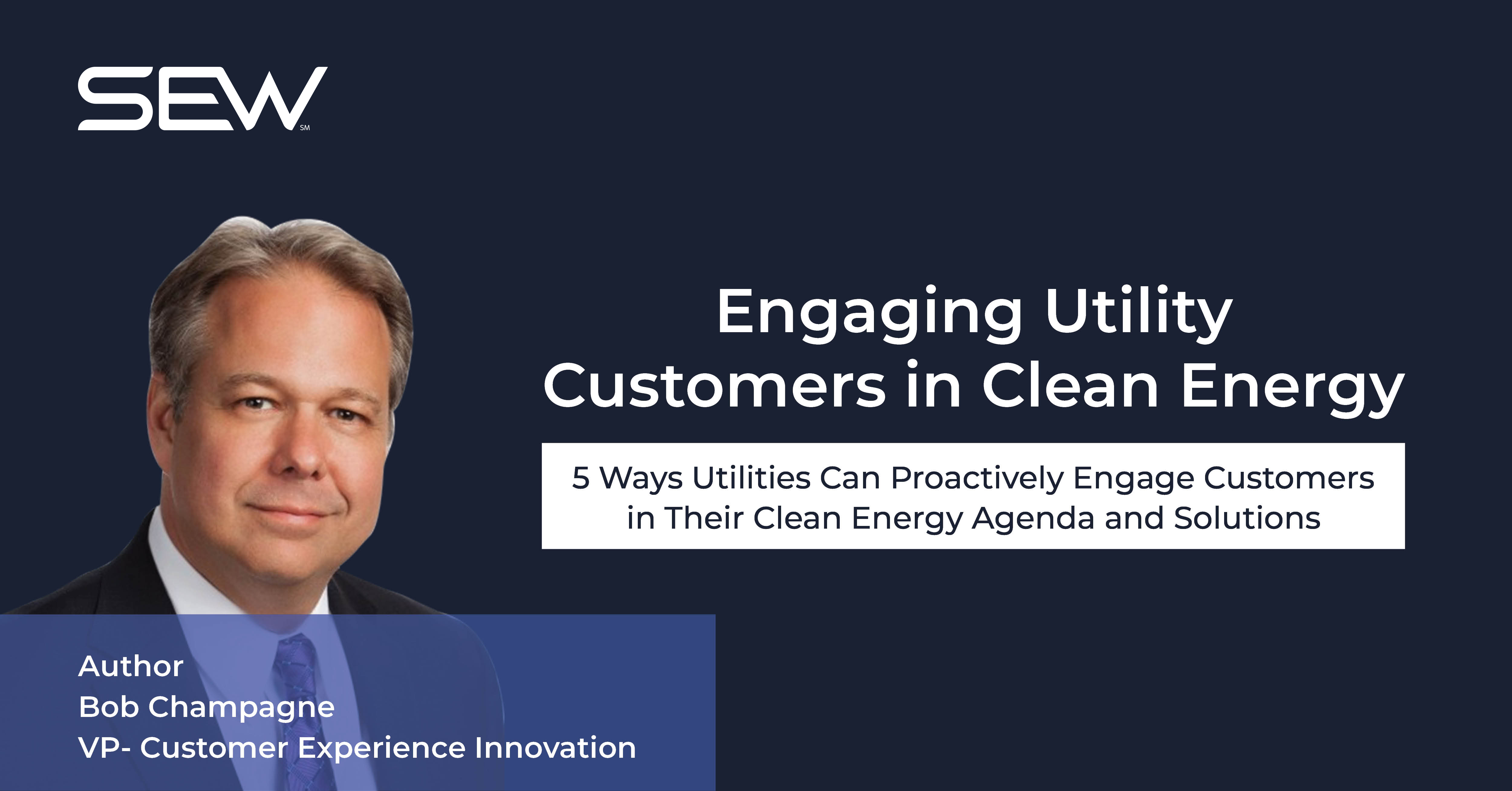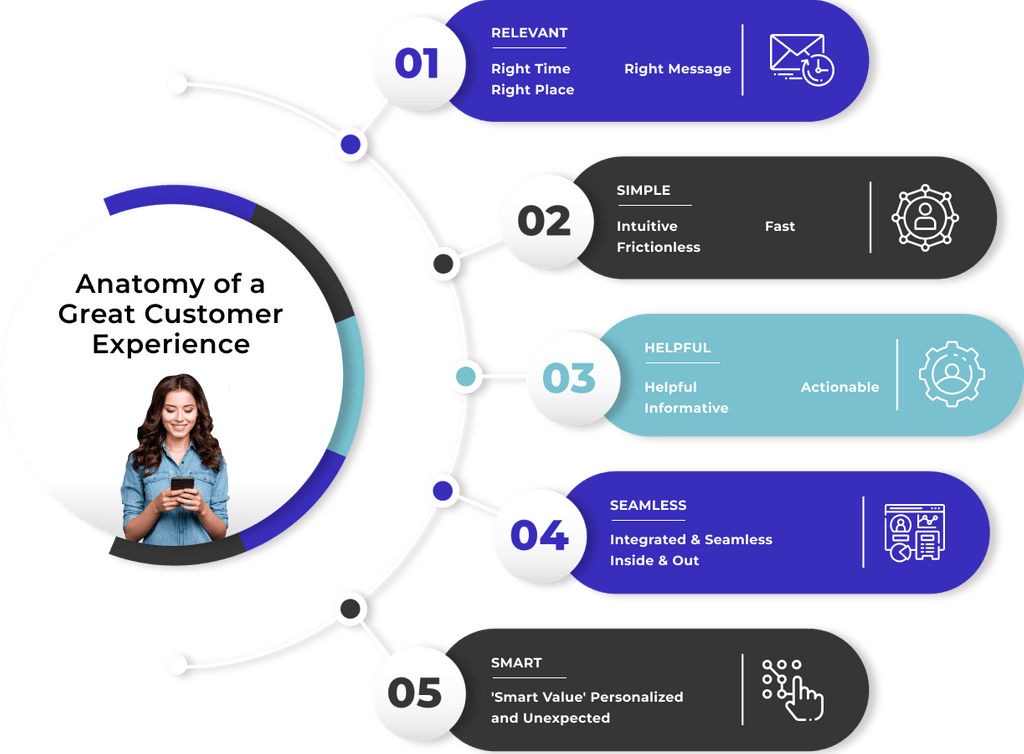
5 Ways Utilities Can Proactively Enroll Customers in Their Clean Energy Agenda
With as much industry ‘buzz’ and press coverage as we are seeing around utilities’ climate goals and clean energy agendas, you would expect customer engagement around this agenda to be following on a similar trajectory. But recent research from JD Powers shows that this is far from current reality. In fact, their most recently published ‘Sustainability Score’ - a metric that rates “consumer awareness, engagement and advocacy for their local utility’s climate initiatives”- sits at a shockingly low 28 out of 100!
Perhaps the more interesting finding from this study is that most of their customers do actually “care” about climate change and believe it’s a serious issue (60%). In fact, many (just under 50%) indicate that they are at least “aware” of their local utility’s support and involvement in this important cause.
Yet, just over 5% of residential customers appear to have taken real action through the adoption of associated clean energy products and solutions.
So, what gives?
The ‘Line of Sight’ from Awareness to Advocacy
We’ve seen story before, just in different contexts. It took a long time for customers to truly embrace and adopt self-service channels for their basic utility transactions, despite customers’ growing awareness and overall receptivity to them. Same with their Energy Efficiency agenda. Many utilities still find difficulty ranslating general awareness of their utility’s support and program offerings into behavioral changes and adoption of energy efficient solutions, even when supported with heavy marketing and attractive incentives.
What’s different today is that utilities have coupled each of these strategic initiatives with dramatic improvements in the customer journeys that power them- creating a seamless ‘line of sight’ for customers between a compelling vision and great solutions offerings , with a clear and simple path to engage personally and take action.
We’ve Done This Before…
Over the past few decades, we’ve seen a major transformation in how utilities think about and design their customer experiences to produce real engagement and sustainable results. We’ve seen changes in just about every aspect of utility customer experience (CX) - from the range of engagement channels available to customers, to the way in which customer journeys have been streamlined, simplified, and personalized.
For many utilities, the quality of basic utility experiences such as connecting service, paying a bill, or checking status of an outage is just as seamless as we’ve grown to expect from the proverbial ‘Ubers’, ‘Amazons’ and ‘Apples’ of the world.
And as a result, utilities by and large have reaped significant benefits in terms of customer perception, improved relationships with regulators, and considerable savings in operational costs.
But this CX transformation , as significant as it’s been, has been mostly focused on ‘traditional’ utility interactions- “transactive” experiences like new connections, billing, payments, outage inquiries, energy efficiency, demand response and others that today characterize the bulk of interactions between utilities with their customers.
Applying these same customer experience and transformation practices to more complex customer journeys – ones that are more unique to individual customer situations, purchase behaviors, and biases- has proved more challenging. Clean Energy certainly fits that bill in terms of complexity.
Clean Energy”, by definition, is much broader in scope, representing combination of customer programs, supply strategies, and brand identity factors – a cause, if you will - that we want customers to be able to engage and interact with. This category of solutions also requires new and more complex interplay across a much wider array of stakeholders and market participants involved in delivering clean energy solutions. And of course, we can’t ignore the fact that for many utilities, the areas that comprise their clean energy journey- solar adoption, eMobility and others- are still relatively new to their solutions portfolio.
Keys to Building An Engaging Clean Energy Customer Experience
Here are 5 things utilities can do to improve customer engagement and participation on their road to cleaner and more sustainable energy. It all starts with designing journeys that establish a clear ‘line of sight’ between utilities’ clean energy vision and the opportunities for customers to engage and participate in meaningful and rewarding ways. It requires implementing a transformative approach to customer engagement that leverages the CX practices that worked for them in the past, and adapts them tosupport a much bolder and purpose drive clean energy agenda.
1. Start with a Strong CX Foundation
The ability to replicate past successes in any areacan be a real asset to an organization, but it requires a deep understanding of what worked and why. And it’s no different when applying CX best practices to other journeys and use cases. The anatomy of a great customer experience – SIMPLE, SEAMLESS, HELPFUL, PERSONALIZED, and SMART - is the same regardless of the nature of the customer journey. Each of these guiding principles has a blueprint for success and countless examples of how they have been applied across a myriad of circumstances. We need to lean on those designs and successes

Integrating these principles into your clean energy journeys will be foundational to eliciting the level and type of engagement desired of each customer- whether its for eMobility, Solar, Storage, or basic Energy Efficiency and Demand Response programs. These principles are repeatable and transportable across journeys, and easily adapted with journey specific content and calls to action.
2. Meet Customers Where They Are (even if its outside the utility! )
Historically, the majority of utility customer interactions have been initiated within a ‘utility-controlled’ channel, and supported largely by the organizations IT and OT systems and workflows. But that’s changing rapidly, particularly when it comes to engaging with, and participating in, areassuch as energy efficiency, eMobility and other aspects of the clean energy space. For these journeys, customers are naturally predisposed to utilitize more intuitive and logical paths to getting information- a car dealer, a home services provider, or more likely the proverbial ‘google search’. Unless given a better alternative, customers will increasingly move outside of the utilities’ ecosystem to initiate and fulfill their needs in these areas.
These external ‘entry’ and delivery channels’ are growing more and more disconnected from utility customer journeys, increasing the likelihood of the utility being ultimately being ‘boxed out’ of the clean energy experience.
That, in and of itself, can stiffle the enormous value and synergies that could be achieved if the utility was engaged from start to finish.
You can see this happening today. Just do some simple google searches around ‘clean energy’, ‘energy efficiency’ or ‘electric vehicles’ and watch just how far down the list you have to go before your local utility even appears in the ‘conversation
Utilities must find better ways to “connect with” (not replace) these external sources of engagement if they are to play an active role with their customers in the clean energy space.

3. Immersive Journeys and Content
Most basic utility interactions are, by design, ‘linear’ and straight forward in nature- request > transact > confirm > done. And that’s intentional because a great customer experience always look to minimize friction in every customer journey.‘involvement’ from the customer. The fact is that for basic customertransactions, customers simply don’t want to be ‘engaged with’.
But utilities know from experience that getting customers to make better energy choices or shift consumption behavior- even just a little- requires a different kind of journey- one that educates, involves and enrolls the customer in the process of getting to the outcomes desired. Clean energy is no different- only much bigger in terms of breadth, depth, types of commitments, and perceived barriers that need to be overcome.
What’s needed are ‘immersive’ journeys that more dynamic in nature…
-engaging customers with purpose driven messaging delivered at the precise right time,
-offering multiple paths and channels for education and learning, and
-intentionally creating simple steps within the experiences to overcome embedded barriers to involvement.
It also includes innovative ways of reinforcing their choices and empowering them to socialize across their own communities and relationships. Immersive journeys require more than just informative content, helpful links and fancy calculators.
Immersive journeys require compelling and engaging content, inside of a thoughtfully designed and well orchestrated journey that is both collaborative and self-reinforcing.
4. Inside-Out Experiences
As we touched on in the earlier discussion around external entry points, almost all of the journeys under the umbrella of clean energy involve a wide range of stakeholders and market participants – most of whom fall well outside the utility’s traditional ecosystem.
That becomes particularly challenging when it comes to programs and solutions such as in home energy efficiency audits, solar installations and EV acquisition; where handoffs are often complex and market participants have little history working with utilities toward common outcomes.
While there are some utilities successfullyorchestrating seamless experiences across this complex landscape, they are few and far between. Until utilities can consistently and seamlessly bridge disconnects with the wider ‘clean energy’ ecosystem (via technology, journey design and strong partnering practices), their ability to influence and contribute to the bigger clean energy agenda will be limited, as will the value perceived by customers.
5. Make it Personal
Despite all the talk about personalization, utilities are really just scratching the surface in terms of what’s possible. Customers expect the content served up from utilities – either proactively or upon request -to be super relevant and useful to them at the instant they need it. Recent approaches and practices like “home energy reports” and “next best actions” are a good start, but only to the degree that they are truly personalized- and to the standards we outlined earlier- RIGHT CONTENT, RIGHT TIME, RIGHT PLACE, RIGHT CONTEXT. Same will go for any content or messaging we expect customers to engage with around clean energy.
For utilities to succeed in this space, many will need to rethink how they define “personalized”.
There is little doubt that the industry is aligning itself in a BIG WAY with the clean energy agenda. How the industry arrived at this point (whether through regulation, incentives, social responsibility or a combination of those forces) is less important than where they are now- faced with an enormous challenge and a very aggressive timeline to achieve it.
As utilities take on these bolder challenges around the environment and clean energy, it’s imperative that customers get quickly engaged and positioned to participate and contribute to this important strategic agenda. The good news is that many of the same “best practices” that transformed customer experiences for our core business, can be adapted and built upon to deliver on these bolder aspirations.


